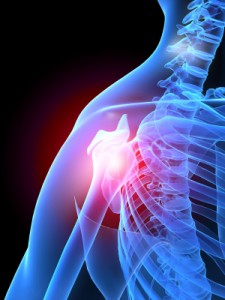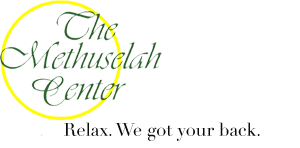Neck Pain
 Neck pain is from the base of the skull along the spine to between the shoulder blades. This type of pain is a common condition. Neck pain can come from a number of disorders and diseases of any tissues in the neck, such as degenerative disc, disease, neck strain, whiplash, a herniated disc or punched nerve. Neck pain is commonly associated with dull aching. Sometimes pain in the neck is worsened with movement of the neck. Other symptoms associated with neck pain include numbness, tingling, tenderness, sharp shooting pain, fullness, difficulty swallowing, pulsation, swishing sounds in the head, dizziness, headaches, light headiness, and gland swelling.
Neck pain is from the base of the skull along the spine to between the shoulder blades. This type of pain is a common condition. Neck pain can come from a number of disorders and diseases of any tissues in the neck, such as degenerative disc, disease, neck strain, whiplash, a herniated disc or punched nerve. Neck pain is commonly associated with dull aching. Sometimes pain in the neck is worsened with movement of the neck. Other symptoms associated with neck pain include numbness, tingling, tenderness, sharp shooting pain, fullness, difficulty swallowing, pulsation, swishing sounds in the head, dizziness, headaches, light headiness, and gland swelling.
Jaw Pain
Jaw pain, “TMJ” stands for Temporo Mandibular Joint, or the jaw joint. You have two TMJ’s, one in front of each ear, connecting the lower jaw bone (the mandible) to the skull. The joints allow movement up and down, side to side, and forward and back all the mobility necessary for biting, chewing and swallowing food, for speaking and for making facial expressions.
Temporo mandibular joint and muscle disorders (TMJD’s), commonly called TMJ, are a collection of poorly understood conditions, characterized by pain in the jaw and surrounding tissues and limitations in jaw movements, and can lead to headaches, teeth grinding, forward head posture, and breathing difficulty.
Shoulder Pain
 Shoulder pain refers to the muscle from just below the ears to the shoulders and the shoulder blades and shoulder joint. The most common problem is frozen shoulder, also called “adhesive capsulitis,” which results in pain or lack of complete range of motion in reaching overhead. Pain in this area is more serious than many people think. The complications associated with the pain in this area is understated and is the beginning of the “elderly shuffle” that bent and stooped heal shuffling gait that the elderly seem to be plagued with along with the chronic debilitating joint pain they suffer with just prior to the wheel chair.
Shoulder pain refers to the muscle from just below the ears to the shoulders and the shoulder blades and shoulder joint. The most common problem is frozen shoulder, also called “adhesive capsulitis,” which results in pain or lack of complete range of motion in reaching overhead. Pain in this area is more serious than many people think. The complications associated with the pain in this area is understated and is the beginning of the “elderly shuffle” that bent and stooped heal shuffling gait that the elderly seem to be plagued with along with the chronic debilitating joint pain they suffer with just prior to the wheel chair.
Treatment for Neck, Shoulder & Jaw Pain
The best way to treat neck, shoulder & jaw pain is to first “correctly and specifically” identify its cause. The cause of neck, shoulder & jaw pain is normally the bodies attempt to level the head. Therefore a competent evaluation by a medical massage therapist must be the first step. Since most pain in this area is soft tissue, X-rays and MRI scans don’t show the cause of the pain but the results of postural misalignment. But the misalignment is just a symptom of a contracted muscle, but a qualified medical massage therapist can find and correct the cause.
